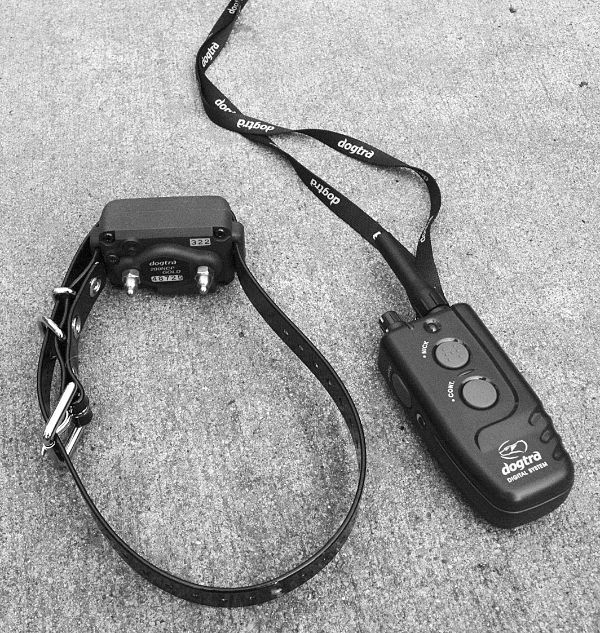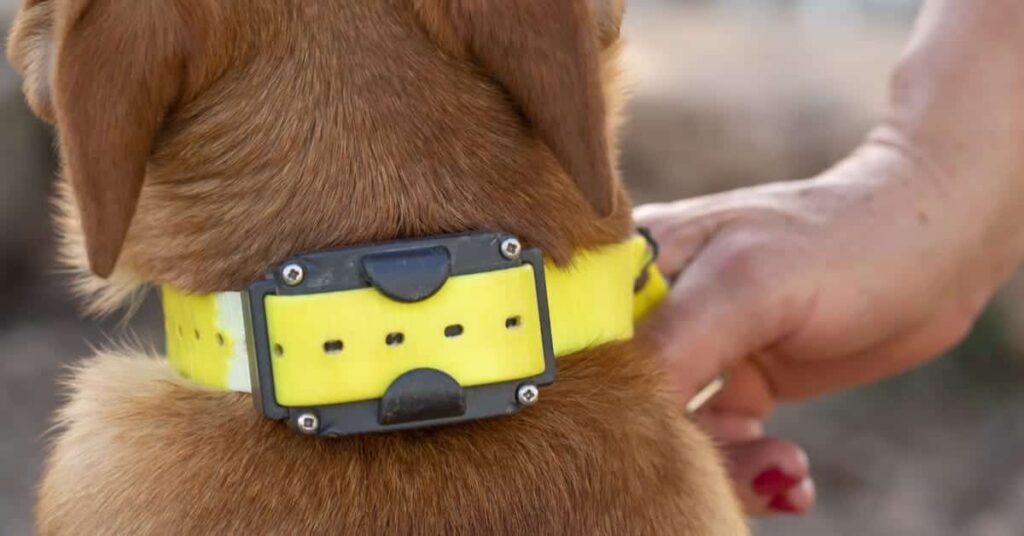In dog training, there has always been a divisive tool that sparks a range of opinions: the shock collar. It’s been a hot debate among dog owners and experts alike.
But have you ever wondered if professional dog trainers use shock collars in their training methods? In this article, we’ll explore this controversial subject and whether shock collars have a place in professional dog training.
Introduction
Welcome to our comprehensive article on shock collars for dogs! Shock collars have been controversial in the dog training community, with strong opinions on both sides. In this article, we will explore the definition and workings of shock collars, the arguments for and against their use, and the various methods employed by professional dog trainers.
We will also delve into the positions taken by dog training associations, individual trainers’ opinions, and the effectiveness of shock collars. Additionally, we will discuss alternative training tools and techniques, consumer perception and safety concerns, and the current legislation and regulations surrounding shock collars.
Understanding Shock Collars
Definition of shock collars
Shock collars, electronic collars, or e-collars are devices designed to deliver electrical stimulation to a dog’s neck through a receiver worn around their neck. The stimulation level can be adjusted, ranging from a mild tingle to a more powerful shock. Shock collars are commonly used as aversive training tools to deter dogs from engaging in unwanted behaviors by associating discomfort or pain with those behaviors.
How shock collars work
Shock collars typically consist of a transmitter held by the handler and a receiver worn on the dog’s collar. The transmitter sends a radio signal to the receiver, triggering a mild electrical impulse. This impulse is delivered through metal prongs or contact points on the receiver, which press against the dog’s neck. The idea behind shock collars is to interrupt unwanted behaviors by providing an aversive stimulus to condition the dog to avoid the associated behavior.
This image is the property of positively.com.
The Controversy Surrounding Shock Collars
Arguments in favor of shock collars
Those who favor shock collars argue that they can effectively train dogs, especially when alternative methods have failed. They believe that the controlled application of low-level electrical stimulation can quickly and efficiently communicate boundaries to dogs. Proponents also argue that shock collars can prevent dangerous behaviors, protect dogs from harm, and ensure their well-being when used correctly and responsibly.
Arguments against shock collars
Critics of shock collars have raised concerns about the potential for misuse and the ethical considerations surrounding their use. They argue that shock collars may cause physical and psychological harm to dogs, potentially leading to fear, anxiety, and aggression. Opponents also question the long-term effectiveness of shock collars and advocate for more humane and positive training methods that focus on reinforcing desired behaviors rather than punishing undesirable ones.
Methods Used by Professional Dog Trainers
Positive reinforcement training
Positive reinforcement training is a method that focuses on rewarding desirable behaviors with treats, praise, or play. This method emphasizes rewarding the dog’s good behavior instead of punishing unwanted behavior. By using positive reinforcement, trainers aim to motivate dogs to repeat behaviors that are desirable to their owners.
Negative reinforcement training
Negative reinforcement training involves removing or avoiding a negative stimulus when the dog performs a desired behavior. For example, the pressure applied to a dog through a leash may be released when the dog enters the desired position. The dog learns to perform the desired behavior to avoid or escape the harmful stimulus.
Balanced training
Balanced training combines elements of both positive and negative reinforcement training. It involves using rewards to reinforce desired behaviors and aversive techniques, such as leash corrections or verbal reprimands, to discourage unwanted behaviors. Proponents of balanced training argue that it allows trainers to address a wide range of behaviors effectively.
This image is the property of cdn.outsideonline.com.
Professional Dog Training Associations’ Stance on Shock Collars
Association A’s position on shock collars
Association A takes a strong stance against using shock collars in dog training. They maintain that shock collars are unnecessary and harmful, potentially causing physical and psychological harm to dogs. Association A promotes positive reinforcement-based training methods as the most effective and humane approach to dog training.
Association B’s position on shock collars
Association B acknowledges that shock collars can be used in certain circumstances but strongly advises against them. They emphasize the importance of professional guidance and expertise when utilizing shock collars and the need for careful consideration of potential risks and ethical concerns associated with their use.
Association C’s position on shock collars
Association C recognizes that shock collars can be one of several training tools available but discourages their use for most dog owners. They advocate for positive reinforcement-based training methods as the primary approach to dog training, citing their effectiveness and the positive impact on the human-dog bond.
Individual Trainers’ Opinions
Trainer 1’s opinion on shock collars
Trainer 1 firmly believes in positive reinforcement training methods and does not endorse using shock collars. They emphasize the importance of building a trusting and positive relationship with the dog through rewards and praise. Trainer 1 argues that dogs are more likely to respond willingly and enthusiastically to training when positive reinforcement is used.
Trainer 2’s opinion on shock collars
Trainer 2 believes that shock collars can be effective when used appropriately and with proper training. They assert that the use of shock collars should be reserved for specific situations where other methods have failed and under the guidance of experienced professionals. Trainer 2 emphasizes the need for responsible use and the importance of considering the dog’s temperament and needs.
Trainer 3’s opinion on shock collars
Trainer 3 has seen positive results with shock collars in some instances, mainly when dealing with immediate safety concerns or highly stubborn dogs. However, they recognize the potential risks and emphasize that shock collars should only be used as a last resort in situations where the dog’s or others’ safety is at risk. Trainer 3 stresses the importance of thorough education and responsible handling of shock collars.
This image is the property of worldanimalfoundation.org.
Effectiveness of Shock Collars
Studies on shock collar effectiveness
Studies examining the effectiveness of shock collars have produced mixed results. Some studies suggest that shock collars can reduce certain behaviors, such as excessive barking or chasing livestock. In contrast, others argue that long-term behavior changes may not be achieved through aversive methods alone. More research is needed to establish the impact of shock collars on different breeds, temperaments, and behavioral issues.
Potential risks and side effects
Using shock collars improperly or excessively can have adverse effects on dogs. Potential risks include physical injuries, heightened anxiety, fear, and aggression. Moreover, shock collars may not address the underlying causes of undesirable behavior and may lead to the suppression of behaviors rather than genuine behavior modification. Dog owners must consider these risks and consult with professionals before using shock collars.
Alternative Training Tools and Techniques
Clickers
Clickers are small handheld devices that make a distinct clicking sound when pressed. Clicker training utilizes positive reinforcement by pairing the clicker’s sound with a reward, signaling the dog that a desired behavior has been performed. Clickers can be precise and practical tools for communication during training sessions.
Whistles
Whistles are used in dog training to provide a consistent and precise sound signal to the dog. Different whistle patterns can communicate different commands, making them a versatile training tool. Whistle training focuses on positive reinforcement and consistency to reinforce desired behaviors.
Training harnesses
Training harnesses are alternative tools to traditional collars that can assist in controlling a dog’s movement and behavior. Harnesses distribute pressure evenly across the body, minimizing discomfort and potential harm. They are handy for dogs prone to pulling or for those with respiratory issues.
Reward-based training
Reward-based training centers around positive reinforcement, utilizing treats, affection, or play to reward desired behaviors. This approach promotes the dog’s willingness to learn and strengthens the bond between the dog and the trainer. Positive associations with training sessions encourage dogs to engage in learning actively.
Target training
Target training involves teaching a dog to touch or follow a specific object, such as a hand or a target stick. By associating the target with rewards, target training allows dogs to learn specific behaviors or tricks in a fun and engaging manner. Target training can be efficient for shaping complex behaviors.
This image is the property of s28489.pcdn.co.
Consumer Perception and Safety Concerns
Public opinion
Public opinion on shock collars varies widely. Some individuals view shock collars as tools for practical dog training, believing that the benefits outweigh the risks. However, many others oppose their use, citing concerns over animal welfare and advocating for more humane alternatives. Public perception and awareness play an essential role in shaping the use and regulation of shock collars.
Safety considerations
Safety considerations are paramount when using any training tool, including shock collars. Choosing a shock collar that is appropriately sized and fitted for the dog is crucial, ensuring that it does not cause discomfort or injury. Regular inspection, proper use, and responsible handling are necessary to minimize risks associated with shock collars.
Legislation and Regulations
Current laws and regulations regarding shock collars
Laws and regulations regarding shock collars vary by jurisdiction. In some regions, the use of shock collars is unrestricted, while certain restrictions or requirements may exist in others. Some places have implemented age restrictions, training, and certification requirements or banned using shock collars altogether. Dog owners need to be aware of the specific regulations in their area.
Proposed changes and bans
As awareness and concern regarding shock collar use continue to grow, there have been calls for stricter regulations and even outright bans. Proposed changes aim to promote the use of positive reinforcement-based training methods and safeguard the well-being of dogs. These proposed changes often stem from concerns about the potential risks, ethical considerations, and the availability of more humane training alternatives.
In conclusion, shock collars for dogs have sparked intense debate within the dog training community. While some trainers and individuals find them effective in specific situations, others believe that shock collars can cause harm and advocate for positive reinforcement-based methods.
The positions taken by professional dog training associations, individual trainers’ opinions, and the effectiveness of shock collars are all critical factors to consider.
Furthermore, alternative training tools and techniques, consumer perception, safety concerns, and legislation surrounding shock collars contribute to the broader discussion. Ultimately, it is crucial for dog owners to thoroughly research and consult with professionals to make informed decisions about the most appropriate training methods for their beloved pets.
This image is the property of outwardhound.com.









![Petrainer Dog Training Collar [100% Waterproof] Petrainer Dog Training Collar](https://mydogtrainingcollar.com/wp-content/uploads/2019/03/Petrainer-Dog-Training-Collar-218x150.jpg)




































